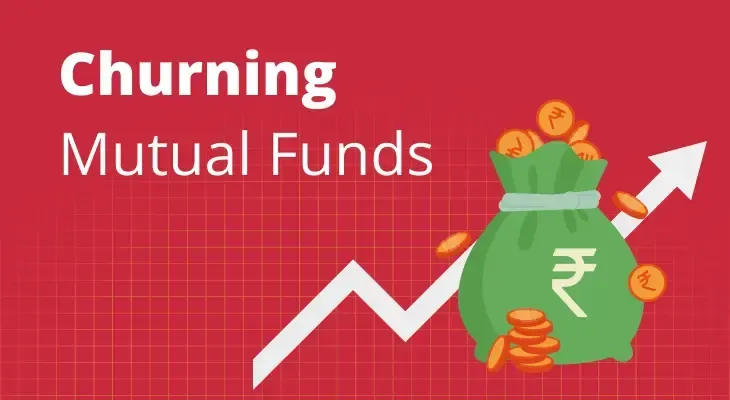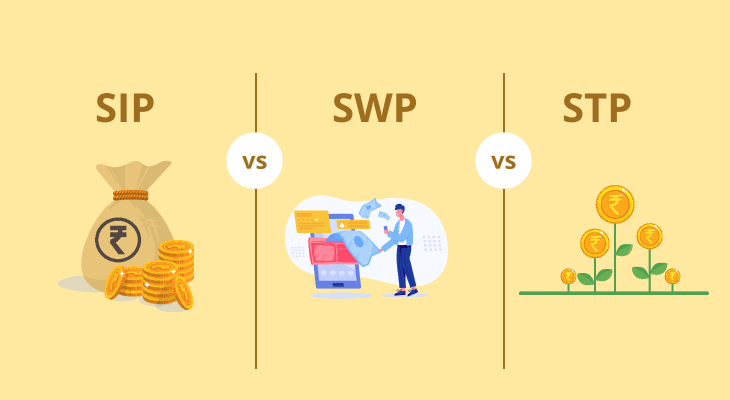
Churn your mutual fund portfolio the right way.
Mutual funds are often touted to be one of the best market-linked investment options available in India. One of the major advantages of investing in mutual funds is that they’re diversified financial products offering exposure to a range of different assets. That said, mutual fund investments are more geared towards long-term wealth creation than short-term gains. This is precisely why many investors looking for quick gains often refrain from investing in such funds. Here’s where mutual fund churning comes into the picture. It is a technique that enables you to generate short-term gains. Read on to learn all about this practice.
What is Mutual Fund churning?
Mutual fund churning is a strategy that investors use to generate profits in the short term. It involves purchasing and selling mutual fund units frequently in a bid to leverage the short-term movements in the Net Asset Value (NAV) that occur due to market fluctuations.
One of the many advantages of churning is that you may gain exposure to a wider range of asset classes. Also, it allows you to quickly adjust your portfolio in accordance with the market movements.
How to churn your Mutual Fund portfolio?
Although there may be many ways to churn mutual funds, the process that most investors follow is often very similar. Here’s an overview of the steps you need to follow.
Re-Evaluate Your Investment Objectives
The first step you need to take before you churn mutual funds is to review your investment goals, risk profile and investment horizon. This simple exercise may provide insights into the kind of mutual funds you need to churn to ensure you meet your goals and objectives.
Assess Your Existing Investments
Once you’ve reviewed your investment goals, tenure and risk profile, you should ideally conduct a thorough analysis of your current mutual fund investments. Doing so can help you identify whether your current portfolio matches your new investment objectives.
Pick Out New Mutual Funds
Do proper research and identify mutual funds that align with your renewed objectives. When picking new mutual funds to invest in, account for factors like asset allocation, past performance, expense ratios and fund manager’s track record.
Establish Your Exit Plan
By now, you should have a clear idea of the mutual funds you need to liquidate from your portfolio. Once you’ve decided on the funds you want to exit from, you should formulate a clear selling strategy. For instance, you can either redeem all of the mutual funds entirely, sell them gradually over time or even set up a Systematic Withdrawal Plan (SWP).
Execute The Strategy
Use the funds you get from redeeming the mutual funds to purchase units of the newly identified funds that match your requirements. Now, it is important to remember that purchasing and redeeming mutual fund units frequently can quickly increase your transaction costs and reduce your returns.
When should you churn Mutual Funds?
Knowing when to churn is equally important as being aware of what mutual fund churning is. In addition to a change in your financial objectives, there are three other scenarios where you can employ a mutual fund churning strategy.
Shift In Market Conditions
Financial markets can be unpredictable. As an investor, you need to be flexible enough to move with the markets if you wish to maximize your wealth-creation potential. For example, when the equity markets are going through a bull run, you can consider churning your investments in debt funds and reinvesting them in equity. On the other hand, if the equity market is going through a period of high volatility, you can book profits by selling your holdings in equity funds and redirecting them towards debt funds.
Change In Mutual Fund Asset Allocation
There are many instances where mutual funds change their asset allocation structure entirely. The newly restructured mutual fund may not meet your investment objectives or other requirements. In such scenarios, you could consider employing a mutual fund churning strategy, where you liquidate your existing investments and shift to a fund that matches your requirements.
Mutual Fund Performance
Every mutual fund benchmarks its performance against an index. If you find your mutual fund consistently underperforming its benchmark index, you may consider churning it. However, before taking such a decision, remember that mutual funds are long-term investments whose returns are likely to balance out only after a few years.
Material Changes In Fund Management
A change in the fund manager can have a profound impact on a mutual fund’s performance. The new manager can either bring about a significant positive change or may lead to the fund becoming a laggard. If you witness a drop in fund performance due to the change in the fund manager, you can consider employing a mutual fund churning strategy.
Costs associated with Mutual Fund churning
Since mutual fund churning requires you to frequently purchase and redeem units, you may have to deal with certain unexpected costs. As an investor, you need to be aware of what they are. Here’s a quick overview of some key costs associated with mutual fund churning.
Exit Load
Exit load is a fee that’s levied when you sell mutual fund units. In case of equity funds, its levied if you exit before 1 year from date of purchase. If you redeem before the exit load period, exit load will be charged.
Bid-Ask Spread
Exchange-traded funds (ETFs) are a type of mutual fund that’s listed and traded on the stock exchanges like stocks. The bid-ask spread is the difference between the highest price an investor is willing to purchase an ETF and the lowest price an investor is willing to sell. A high bid-ask spread indicates low liquidity, which can impact your returns.
Expense Ratios
All mutual funds levy a charge known as the expense ratio. The expense ratio is the fee that the AMC charges for managing the fund. If your mutual fund churning strategy involves purchasing and redeeming multiple mutual funds frequently, you may end up paying a significant amount as an expense ratio.
Taxes
The profits from the redemption of mutual fund units are taxable depending on how long you hold them for. Short-term gains at 15%, whereas long-term gains are taxed at 10%. The tax on capital gains is another major expense that can reduce your returns.
Conclusion
Although mutual fund churning is a good way to enjoy short-term gains, it is equally important to focus on long-term wealth creation. Looking for the best mutual funds to invest in? Get intelligently curated filters on m.Stock like best equity funds, top AMCs, fund managers, top ELSS funds and more. And the best part is that you can earn up to 1% extra returns with Direct plans. So, open a FREE Demat account with m.Stock and master mutual fund investing!
SIPs let you invest small amounts regularly, making it easier to stay consistent with your goals. With time, your money grows faster through compounding, helping you get the most out of your investments. Try our SIP Calculator to see how your money can grow and make smarter plans for your future.


